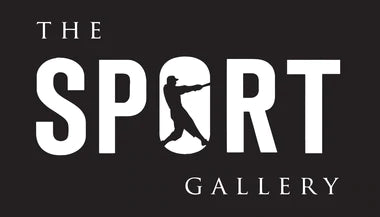When you think of baseball in Canada it is safe to guess that the Toronto Blue Jays come to mind. The Jays were the first Major League team outside of the United States to win the World Series, which they did in 1992 and 1993. This cemented their place in the hearts of Canadians everywhere. They wear the maple leaf on their hats and shirts, and brand themselves as "Canada's team." This title rings true as the Jays are now the only team north of the border, and all 162 of their games are broadcasted nationally on TV and the radio.
But the Jays aren't the beginning and end of baseball in Canada. You may also think of the Montreal Expos. Sadly, the Expos moved away to Washington D.C. in 2004 and became the Nationals. Montreal's MLB franchise was actually the first of it's kind in Canada, coming into the Majors in 1969 – they Jays weren't born until 1977. They never won a World Series title but had a number of great teams, and it's widely thought that had the 1994 season not been cut short by a labour strike, the Expos would have won it all.
The Expos have a sort of cult following, partially due to their quirks: they belonged to a french-speaking city, played in the unconventional Olympic Stadium, and had a wacky logo and uniforms. No team had worn a "pinwheel" hat before in the Majors, and it took some convincing to get people to believe that their cap actually did have an "M" on it. The Expos also had great, easy-to-love players, such as Tim Raines, Andre Dawson, Dennis Martinez, and Gary Carter. Guys that hustled and played with a smile on their faces.
The thing is, though – you can't stop at the Jays and Expos... Baseball in Canada is much more than that. The country has a long history of minor league, semi-pro, and, of course, amateur ball. Every major hub from east to west has some dirt-covered baseball story to be told, but for the sake of time, we're going to stick with Montreal right now. Not with the Expos, but with the other big club that has called the city home: the Royals, a professional minor league franchise that played from 1897 to 1917, and from 1928 to 1960.
The Royals were part of the International League during that second period, between 1928 and 1960, serving as an affiliate to three Major League clubs – the Philadelphia A's, the Pittsburgh Pirates, and the Brooklyn/Los Angeles Dodgers – though the bulk being with one team, the Dodgers. This relationship lasted 21 years over two class designations, AA and AAA. The Royals, who played out of Delorimier Stadium, borrowed the Dodgers look, donning blue accents and a flowy, cursive script.
And it was the Royals' relationship with the Dodgers that ensured the team would be widely remembered. In 1946, Branch Rickey, President and GM of the Brooklyn Dodgers, signed Jackie Robinson to a minor league contract. This made Robinson the first black man to be part of a MLB-affiliated roster, breaking the unofficial, but thoroughly enforced, colour barrier. He was a sensation in Montreal from the start, winning the fans' hearts with a hot bat and daring base stealing. In his one season with the Royals Robinson hit .349 with 113 runs and a whopping 40 stolen bases.
That year Robinson would guide the Royals to 100 wins and a 1st-place IL finish, and to a Junior World Series victory against the Kansas City Blues of the American Association. Clearly ready for a shot at a Major League roster, off he went to the Dodgers pre-season camp in 1947. It's famously noted that Royals fans chased Robinson to the train station – described thusly by Sam Maltin, a freelancer writing for the Pittsburgh Courier: "It was probably the only day in history that a black man ran from a white mob with love instead of lynching on its mind."
The Royals would continue to have success after Robinson's departure, winning five more IL titles before 1960. They won an all-Canadian showdown against the Toronto Maple Leafs to grab their final trophy, in 1958. Despite this success the Royals struggled to keep attendance up in the later years. In 1960 the Dodgers, now two years into their LA adventure, decided to cut ties with Montreal. This was the death knell – the Royals packed up and moved to Syracuse for the 1961 season.
While professional baseball has come and gone in Montreal, the legacy of the Royals and their 1946 season remains. They are part of baseball history, Canadian or otherwise. Jackie Robinson changed the game forever, and that journey started in Montreal.






